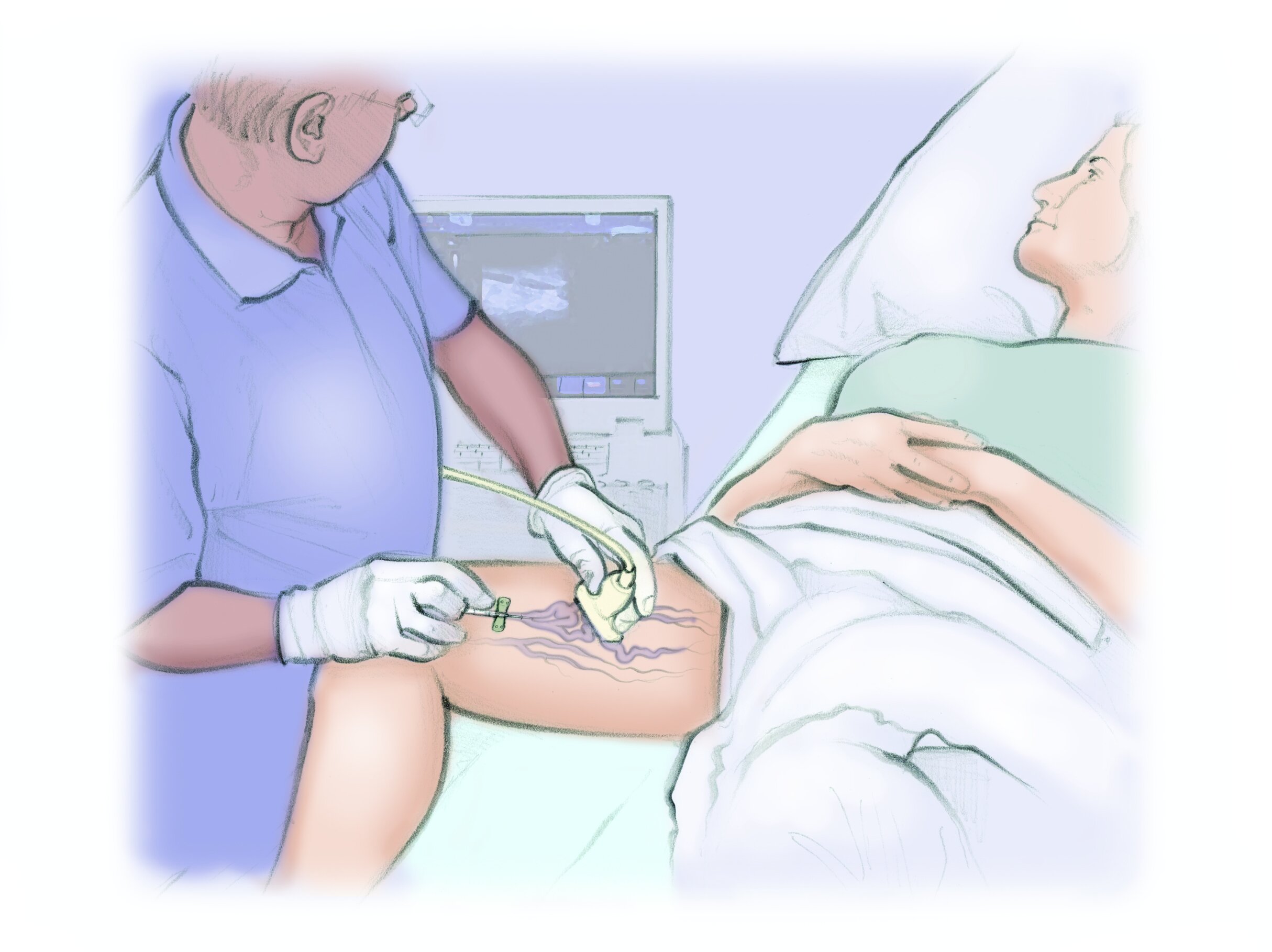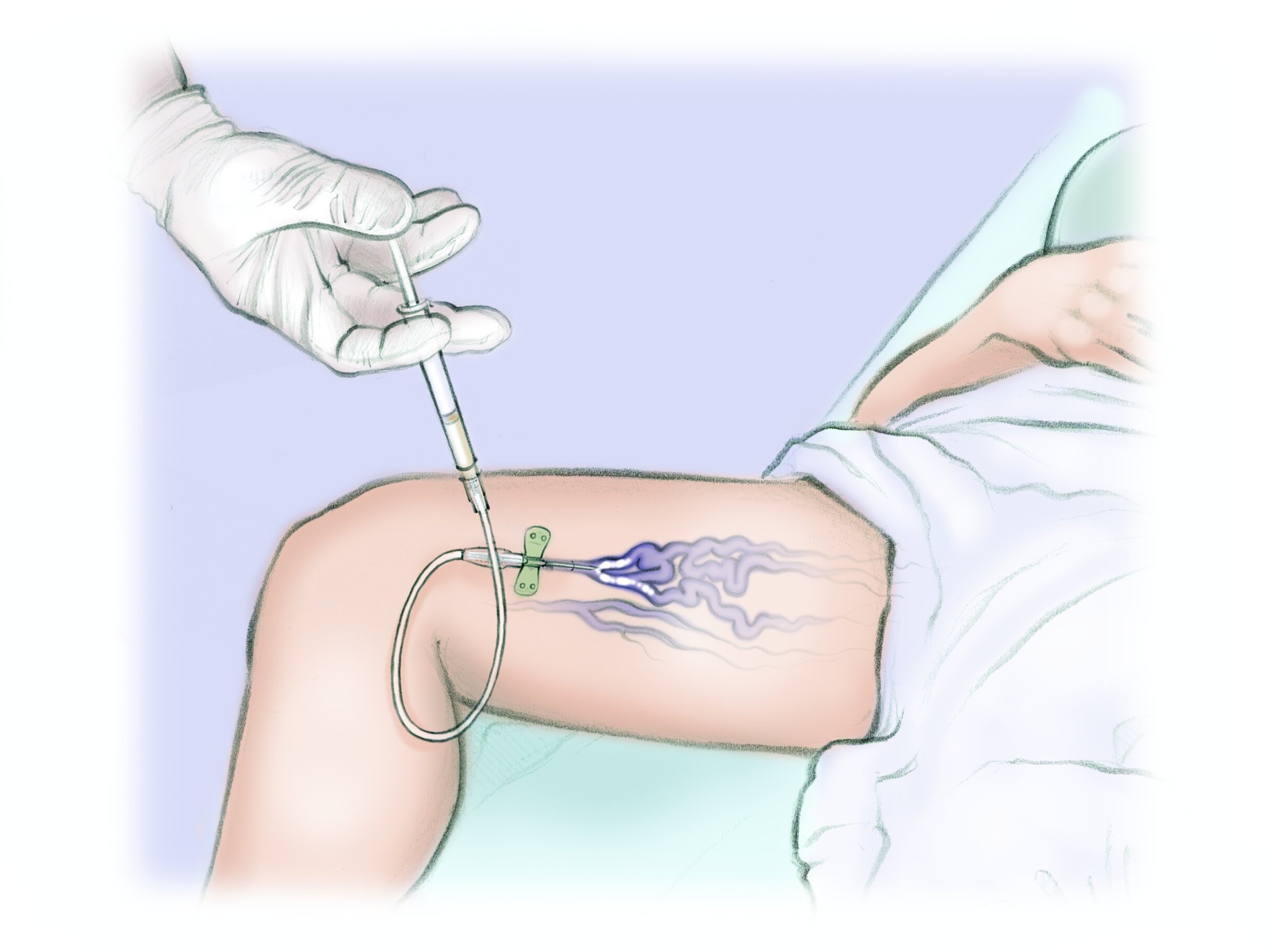MIIP for Vascular Malformations
A minimally invasive treatment for abnormal tangles of blood vessels
What is a Vascular Malformation?
Vascular Malformations are abnormal tangles of blood vessels. There are different types. Some can look like a “birthmark” and be present at birth. Some will fade away on their own. Others become more noticeable with time. They can be under the skin or deeper. Some can cause pain and swelling. Some can alter a person’s appearance. Treatment options depend on the type of vascular malformation.
A MIIP is a minimally invasive, image-guided procedure that can be an alternative to surgery. A MIIP for vascular malformations blocks off the abnormal blood vessels so they collapse and shrink. Two treatment options are Embolization and Sclerotherapy. These are MIIPs to block off (embolization) or destroy (sclerotherapy) the abnormal tangle of vessels.
How is embolization or sclerotherapy done?
You will be given medicine to help you relax. The clinician cleans and numbs the skin over the vascular malformation. They use ultrasound to put tiny needles into the vascular malformation. They inject contrast to see the vascular malformation on x-ray. Then block off the abnormal vessels with special materials like little coils (embolization) or foam detergent (sclerotherapy). Sometimes, they need to thread a thin tube through a blood vessel at the neck or top of the thigh and guide it to the vascular malformation using moving x-rays.
Vascular Malformation Treatment
1. After numbing the skin, the clinician puts tiny needles into the vascular malformation.
2. They inject special material to block off (embolization) or destroy (sclerotherapy) the abnormal tangle of vessels.
3. The needles are removed and a bandage is placed on the skin.
What are the risks?
Embolization and sclerotherapy are generally safe procedures when done by specialists.
3-11 in 100 people
develop infection
experience bleeding
have damage to surrounding healthy tissues such as the skin and nerves
If the vascular malformation is close to the skin, then there is also a risk of making the skin in that spot darker. Very rarely, the special material used to treat the abnormal vessels can go to normal vessels and damage them.
What are the alternatives?
Your treatment options depend on your preferences and your unique conditions. Often people need multiple treatments.
Alternative 1 No treatment. The advantage of this is avoiding risks of treatment. The disadvantage of this is that the symptoms from the vascular malformation could get worse. Some large vascular malformations can strain and hurt the heart over time if they are not treated.
Alternative 2 Medicines can help control symptoms. Newer medicines can even treat certain types of vascular malformations.
Alternative 3 Lasers can destroy or decrease the size of the vascular malformation over time. This can be done from outside your body called percutaneous photocoagulation or from inside the vessels themselves called endovenous ablation.
Alternative 4 Surgery can cut out some vascular malformations. This is the most invasive option. Complications occur in up to 1 in 5 people.




